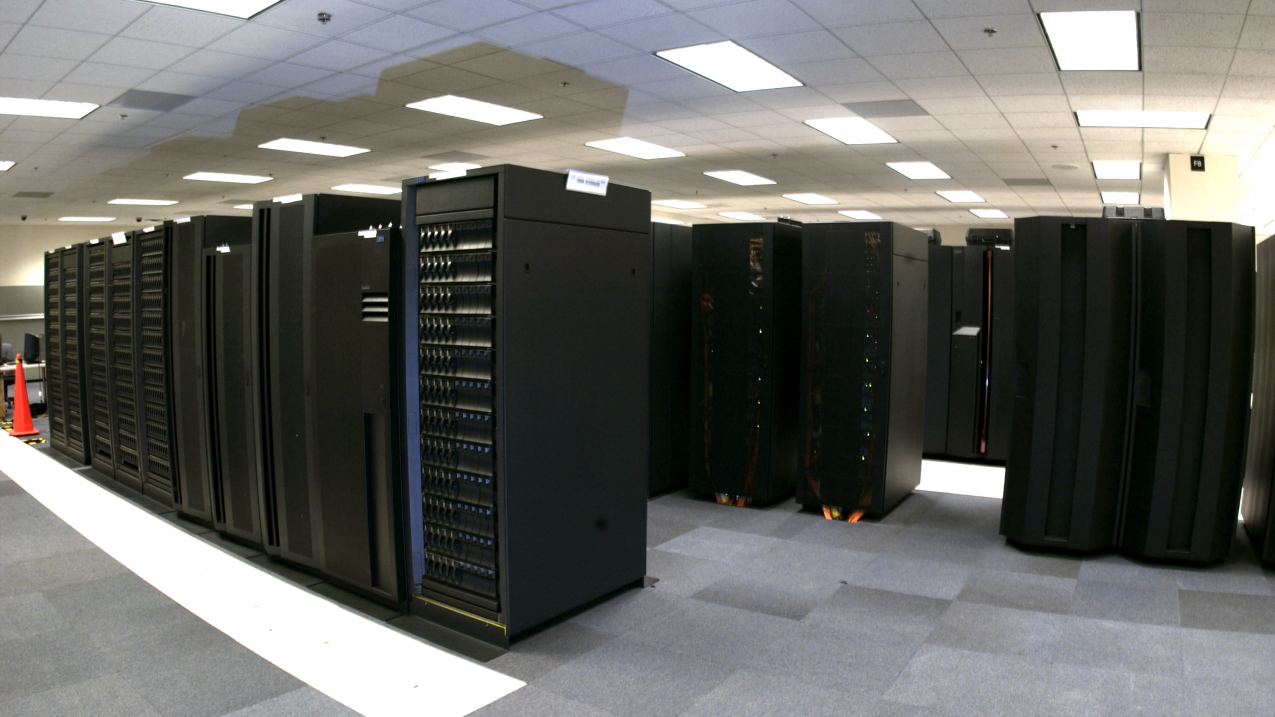Nearly four-fold increase in computing capacity to innovate U.S. forecasting in 2016
NOAA’s Weather and Climate Operational Supercomputer System is now running at record speed, with the capacity to process and analyze earth observations at quadrillions of calculations per second to support weather, water and climate forecast models. This investment to advance the field of meteorology and improve global forecasts secures the U.S. reputation as a world leader in atmospheric and water prediction sciences and services.

IBM supercomputers used for climate and weather forecasts. (Image credit: NOAA)
The computers — called Luna and Surge — are located at computing centers in Reston, Virginia and Orlando, Florida. They are now running at 2.89 petaflops each for a new total of 5.78 petaflops of operational computing capacity, up from 776 teraflops of processing power last year.
“This significant investment in our operational supercomputers equips us to handle the tidal wave of data that new observing platforms will generate and allows us to push our science and operations into exciting new territory, said Kathryn Sullivan, Ph.D., NOAA’s administrator. “The faster runs and better spatial and temporal resolution that Luna and Surge provide will allow NOAA to improve our environmental intelligence dramatically, giving the public faster and better predictions of weather, water and climate change. This enhanced environmental intelligence is vital to supporting the nation’s physical safety and economic security.”
Sullivan said the ultimate goal of investment in operational and research supercomputing capacity is to build resilient communities in the United States by arming people with reliable environmental intelligence to make good decisions, as NOAA works to build a Weather-Ready Nation.
The increase in supercomputing strength will allow NOAA to roll out a series operational model upgrades throughout 2016. For example:
- Upgrades to the High Resolution Rapid Refresh Model (HRRR) will help meteorologists predict the amount, timing and type of precipitation in winter storms and the timing location and structure severe thunderstorms.
- Implementation of a new National Water Model will expand the National Weather Service’s current water quantity forecasts at 4,000 locations to forecasts of flow, soil moisture, snow water equivalent, evapotranspiration, runoff and other parameters for 2.7 million river and stream locations across the country, representing a 700-fold increase in spatial density. This new information, provided nationally at the neighborhood scale, will enable forecasters to more accurately predict droughts and floods, and better support water resources decisions.
- Upgrades to the Hurricane Weather Research and Forecasting Model (HWRF) will mark the first time NOAA models have had direct connections between the air, ocean and waves to improve forecasts of hurricane tracks and intensity. This upgrade will increase the number of storms NOAA can forecast for at any given time to 8.
The increase in supercomputing capacity comes via a $44.5 million investment using NOAA's operational high performance computing contract with IBM, $25 million of which was provided through the Disaster Relief Appropriations Act of 2013 related to the consequences of Hurricane Sandy. Cray Inc., headquartered in Seattle, serves as a subcontractor for IBM providing the new systems to NOAA.
NOAA’s mission is to understand and predict changes in the Earth's environment, from the depths of the ocean to the surface of the sun, and to conserve and manage our coastal and marine resources. Join us on Facebook, Twitter, Instagra
Contact:
Susan Buchanan
301-427-9000



